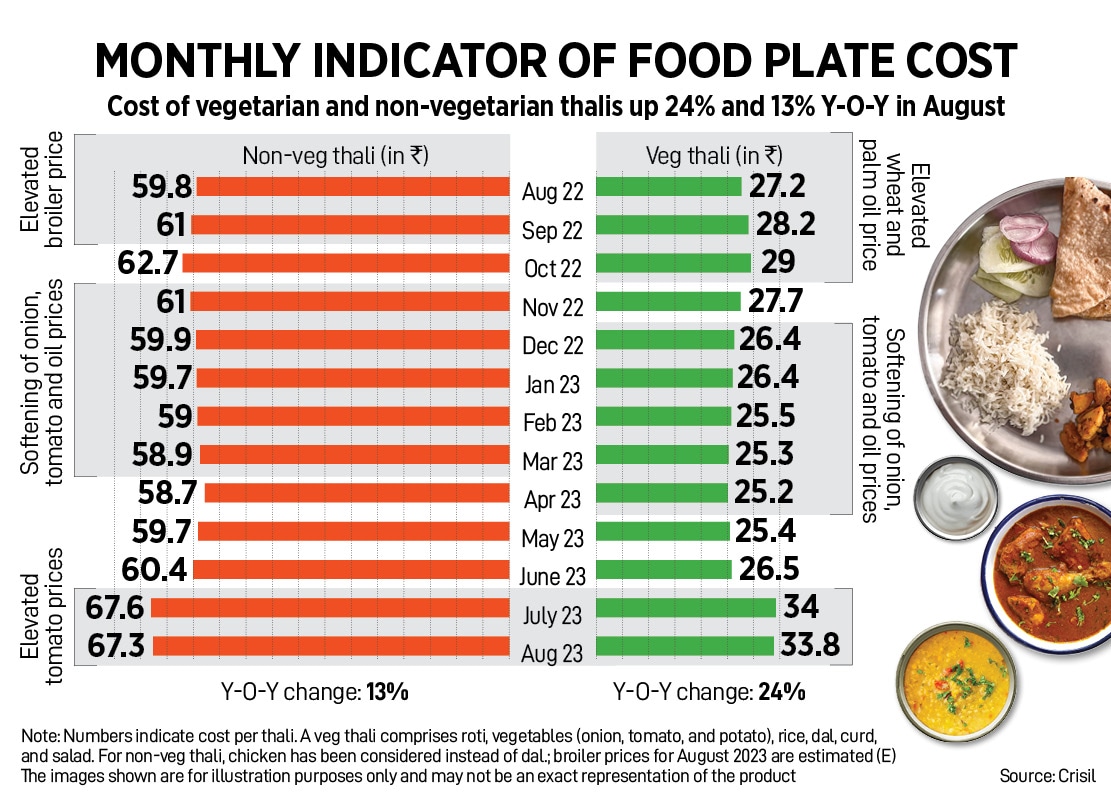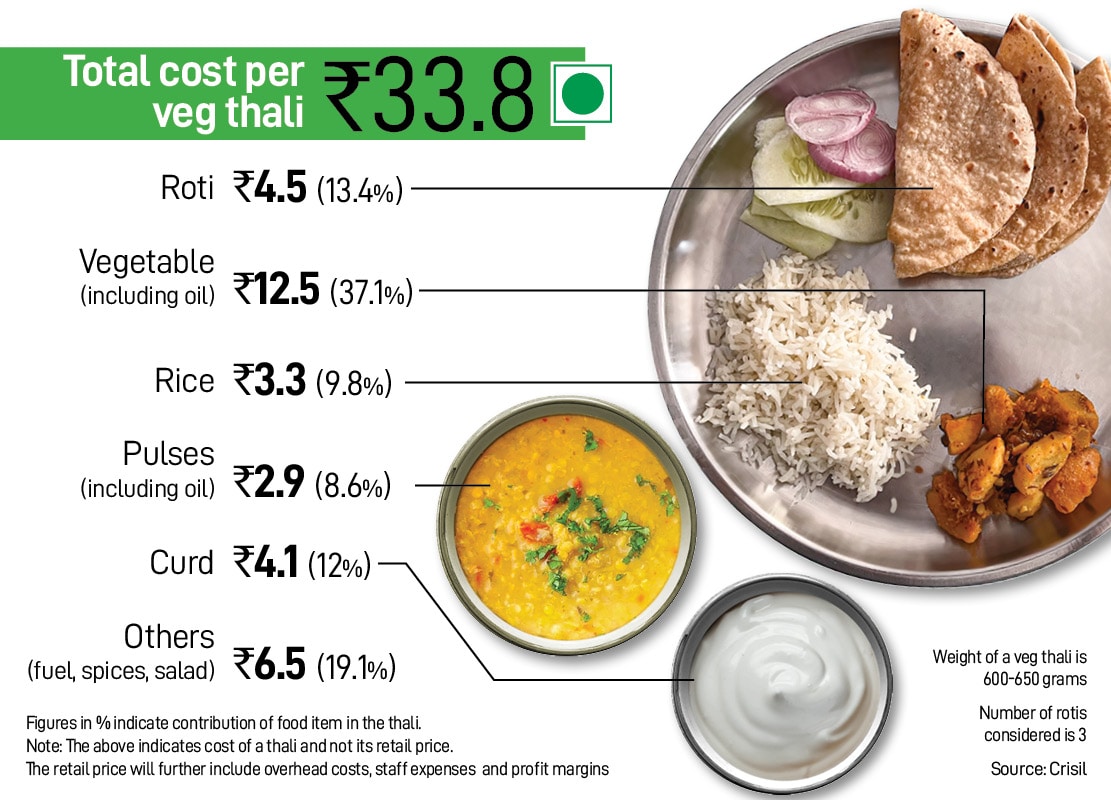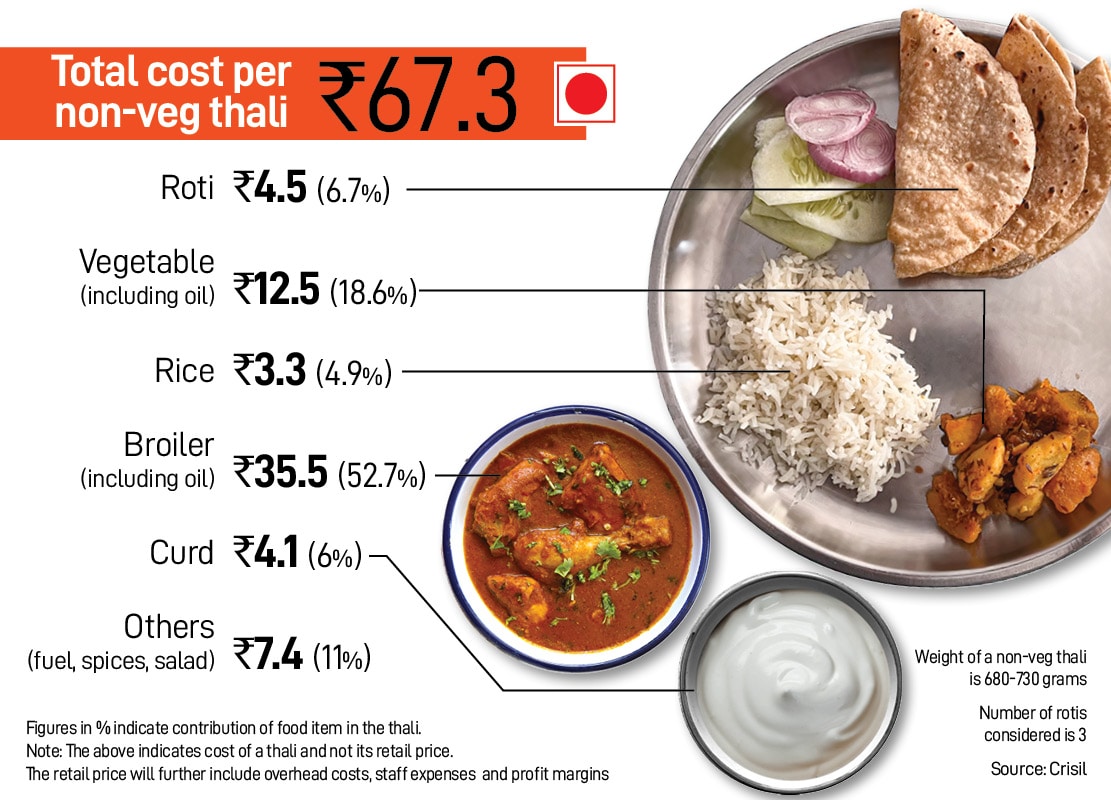
How India Eats: Thali cost cools off in August, but still steep over last year
Prices of onion jumped 8 percent, chilli 20 percent and cumin prices surged 158 percent year-on-year which contributed an overall increase of 1 percent in the cost of vegetarian thali in August
 Infographics by Kapil Kashyap
Infographics by Kapil Kashyap
Even as food inflation has been worrying due to erratic and scanty monsoon, overall cost of a household thali marginally declined in August as the raging tomato prices fell. However, elevated prices of other key food items like onion, chilli and cumin kept prices of both vegetarian and non-vegetarian thalis high compared to August last year.
The average cost of a vegetarian thali was Rs33.8, a slight decline of 0.6 percent from July. In July, this thali came for Rs34. However, compared to the same month last year, the average cost of a vegetarian thali jumped 24 percent, based on an analysis by Crisil. Of the 24 percent rise in the vegetarian thali cost, 21 percent can be attributed solely to the price of tomato. Prices of tomato surged 176 percent on-year to Rs102 per kg in the month compared to Rs37 per kg in the year-ago period.

Similarly, prices of onion jumped 8 percent, cost of chilli got expensive by 20 percent and cumin prices surged 158 percent year-on-year. These three items contributed an overall increase of 1 percent to the cost of vegetarian thali in August.
Comparatively, rise in the average cost of a non-vegetarian thali in August was slower on a yearly basis. Average cost of a non-vegetarian thali was Rs67.3 in August, decreasing 0.4 percent from the previous month. In July, the same thali cost Rs67.6. What saved the increase in non-vegetarian thali was the price of broilers (or chicken). Broilers, which form more than 50 percent of a non-vegetarian cost, are estimated to have risen a moderate 1-3 percent year-on-year.








